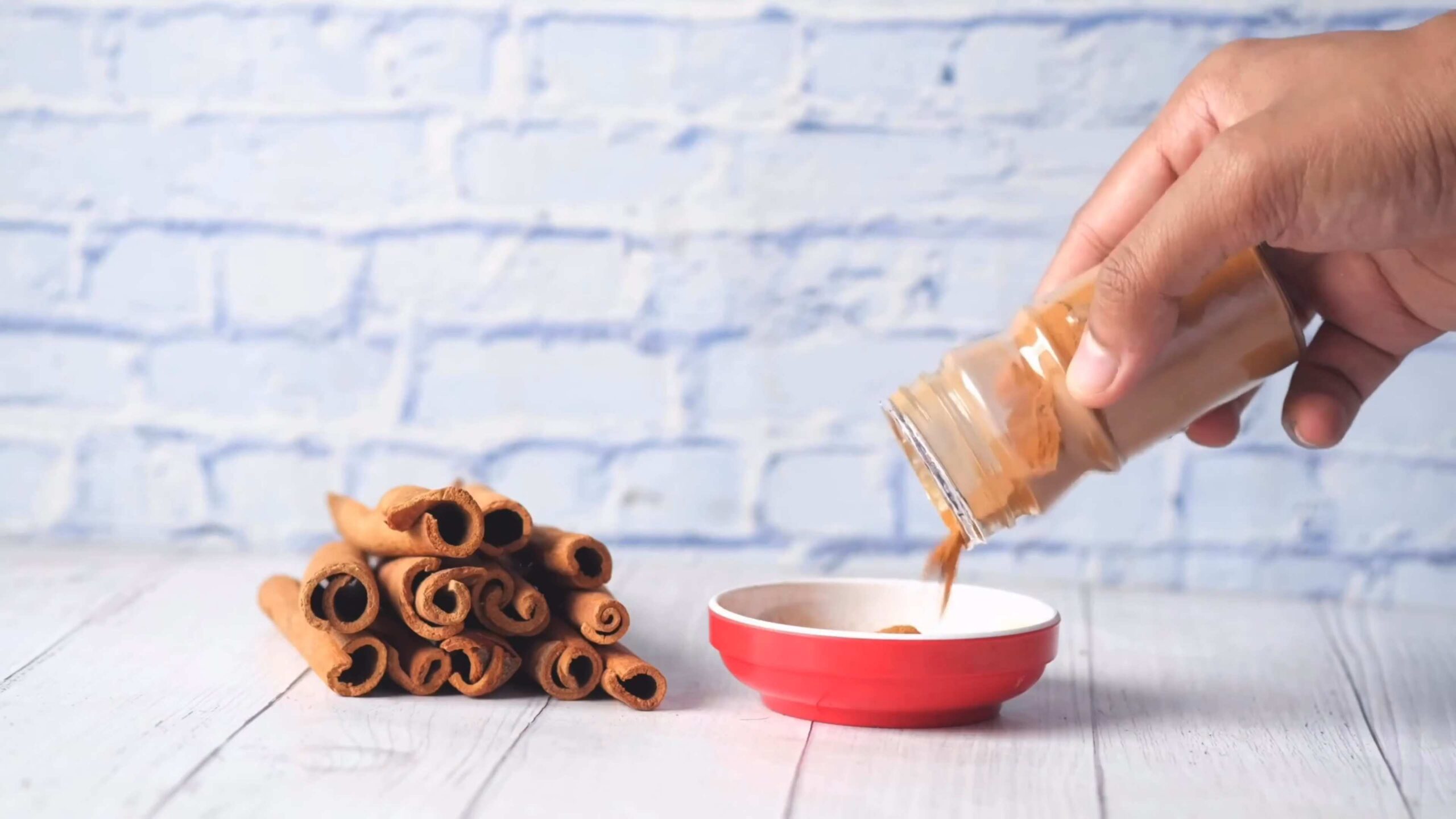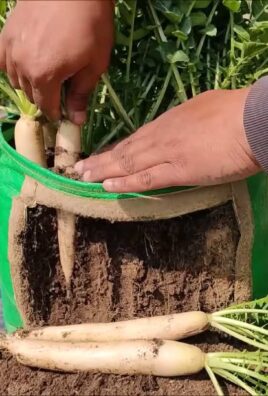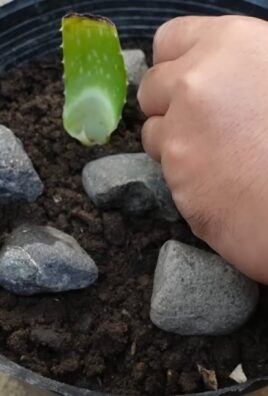Cinnamon for Fungus Gnats: Sounds like a spice rack remedy, right? Well, you’re not wrong! I’m so excited to share this simple yet incredibly effective DIY trick that will save your precious houseplants from those pesky fungus gnats. For centuries, cinnamon has been valued not only for its culinary uses but also for its medicinal and antimicrobial properties. Think back to ancient civilizations using it to preserve food and treat ailments – it’s a powerhouse!
But what does this have to do with your indoor jungle? Fungus gnats, those tiny, annoying flies buzzing around your plants, thrive in moist soil and can damage roots, hindering growth. Nobody wants that! This is where the magic of cinnamon comes in. It acts as a natural fungicide, combating the fungus that fungus gnats feed on, effectively breaking their life cycle. I know, it sounds too good to be true, but trust me, it works!
In this article, I’ll walk you through exactly how to use cinnamon for fungus gnats, providing you with a step-by-step guide to banish these unwanted guests and keep your plants healthy and thriving. Say goodbye to those annoying bugs and hello to happy, healthy plants – all thanks to a little spice!

Cinnamon to the Rescue: Banishing Fungus Gnats from Your Beloved Plants!
Okay, fellow plant parents, let’s talk about a tiny terror that plagues us all: fungus gnats! These little buggers are annoying, and while they don’t usually kill mature plants, their larvae can munch on roots, especially in seedlings. I’ve tried a bunch of things to get rid of them, and I’m here to share my favorite, most effective, and surprisingly pleasant-smelling solution: cinnamon!
Why cinnamon? Well, it’s a natural fungicide. It contains compounds that inhibit the growth of fungi, which is what the fungus gnat larvae feed on in the soil. Plus, it’s readily available and safe for your plants (when used correctly, of course!).
Here’s how I use cinnamon to kick those fungus gnats to the curb:
What You’ll Need:
* Ground Cinnamon (the regular kind you use for baking!)
* Water (tap water is fine)
* Spray Bottle
* Small Bowl or Container
* Spoon or Stirring Utensil
* Optional: Hydrogen Peroxide (3% solution)
The Cinnamon Solution: Two Powerful Methods
I use two main methods to tackle fungus gnats with cinnamon: a soil drench and a surface application. I find that using both together gives the best results.
Method 1: Cinnamon Soil Drench
This method targets the larvae living in the soil.
1. Prepare the Cinnamon Solution: In your small bowl or container, mix 1 teaspoon of ground cinnamon with 2 cups of warm water. Make sure the water isn’t too hot, just comfortably warm to help the cinnamon dissolve a bit better.
2. Stir Thoroughly: Stir the mixture really well. Cinnamon doesn’t dissolve completely in water, so you’ll end up with a slightly cloudy, cinnamon-infused liquid. Don’t worry about any sediment; it’s perfectly normal.
3. Let it Steep (Optional but Recommended): For a more potent solution, let the mixture steep for a few hours or even overnight. This allows the water to extract more of the antifungal properties from the cinnamon.
4. Strain (Optional): If you’re worried about clogging your watering can or if you have a very fine-leaved plant, you can strain the mixture through a coffee filter or cheesecloth. I usually skip this step, but it’s up to you.
5. Water Your Plants: Now, use the cinnamon solution to water your plants as you normally would. Make sure to saturate the soil thoroughly, allowing the water to drain out of the bottom of the pot. This ensures that the solution reaches the larvae deep within the soil.
6. Repeat Weekly: Repeat this process once a week for at least 2-3 weeks, or until you no longer see fungus gnats flying around. Consistency is key!
Method 2: Cinnamon Surface Application
This method creates a barrier on the soil surface, preventing adult gnats from laying eggs.
1. Lightly Sprinkle Cinnamon: Take your ground cinnamon and lightly sprinkle a thin layer directly onto the surface of the soil around your plants. You don’t need to use a lot; a light dusting is enough.
2. Avoid Overdoing It: Be careful not to overdo it! Too much cinnamon can create a crust on the soil surface, which can hinder water absorption.
3. Reapply Regularly: Reapply the cinnamon every week or two, especially after watering. The water will wash away some of the cinnamon, so you’ll need to replenish it.
Boosting Your Fungus Gnat Fighting Power: The Hydrogen Peroxide Trick
For a really stubborn infestation, I sometimes add a little hydrogen peroxide to the soil drench. Hydrogen peroxide (3% solution, the kind you get at the drugstore) breaks down into water and oxygen, which can help kill fungus gnat larvae and aerate the soil.
1. Prepare the Hydrogen Peroxide Solution: Mix 1 part 3% hydrogen peroxide with 4 parts water. For example, you could mix 1/2 cup of hydrogen peroxide with 2 cups of water.
2. Combine with Cinnamon Drench (Optional): You can either use the hydrogen peroxide solution on its own or combine it with the cinnamon soil drench. If you’re combining them, simply add the hydrogen peroxide solution to the cinnamon mixture after you’ve prepared it.
3. Water Your Plants: Water your plants with the hydrogen peroxide solution (or the combined cinnamon and hydrogen peroxide solution) as you normally would, making sure to saturate the soil.
4. Use Sparingly: Don’t use hydrogen peroxide too often, as it can harm beneficial soil microbes. I usually only use it once or twice during the treatment period.
Important Considerations and Tips:
* Identify the Problem Correctly: Make sure you’re actually dealing with fungus gnats and not some other pest. Fungus gnats are small, dark, mosquito-like flies that are often seen flying around the soil of your plants. Their larvae are tiny, white, and worm-like.
* Improve Drainage: Fungus gnats thrive in moist soil, so improving drainage can help prevent infestations. Make sure your pots have drainage holes and that you’re not overwatering your plants.
* Let the Soil Dry Out: Allow the top inch or two of soil to dry out between waterings. This will make the soil less hospitable to fungus gnat larvae.
* Top Dress with Sand or Gravel: Adding a layer of sand or gravel to the top of the soil can help prevent adult gnats from laying eggs.
* Sticky Traps: Yellow sticky traps can help catch adult fungus gnats and reduce their population. You can find these at most garden centers.
* Neem Oil: Neem oil is another natural insecticide that can be effective against fungus gnats. You can use it as a soil drench or as a foliar spray.
* Quarantine New Plants: Always quarantine new plants for a few weeks before introducing them to your other plants. This will help prevent the spread of pests and diseases.
* Be Patient: It may take a few weeks to completely get rid of fungus gnats, so be patient and persistent with your treatment.
* Don’t Overwater: I can’t stress this enough! Overwatering is the number one cause of fungus gnat infestations. Let your soil dry out a bit between waterings.
* Proper Ventilation: Good air circulation helps the soil dry out faster and makes it less appealing to fungus gnats.
* Clean Up Debris: Remove any dead leaves or other organic matter from the soil surface, as this can provide food for fungus gnat larvae.
* Use a Well-Draining Potting Mix: When repotting your plants, use a well-draining potting mix that doesn’t retain too much moisture.
* Monitor Your Plants Regularly: Check your plants regularly for signs of fungus gnats or other pests. The sooner you catch a problem, the easier it will be to solve.
* Consider Bottom Watering: Bottom watering can help keep the surface of the soil dry, which can discourage fungus gnats.
* Beneficial Nematodes: These microscopic worms are natural predators of fungus gnat larvae. You can purchase them online or at some garden centers.
* Diatomaceous Earth (DE): Food-grade diatomaceous earth is a natural powder made from fossilized algae. It’s abrasive to insects and can kill fungus gnat larvae. Sprinkle a thin layer on the soil surface. Be sure to use food-grade DE, as other types can be harmful.
* Adjust Your Watering Schedule: Pay attention to the specific needs of each plant. Some plants need more water than others. Adjust your watering schedule accordingly.
* Observe Your Plants: Get to know your plants and their needs. The more you observe them, the better you’ll be able to detect problems early on.
* Don’t Give Up! Getting rid of fungus gnats can be a challenge, but don’t give up! With a little patience and persistence, you can win the battle.
Why I Love This Method
I’ve tried so many different methods for dealing with fungus gnats, from sticky traps to chemical insecticides. But I always come back to cinnamon. It’s natural, effective, and it smells great! Plus, it’s safe for my plants and my pets. I feel good knowing that I’m not using harsh chemicals in my home.
And honestly, who doesn’t love the smell of cinnamon wafting through the air while you’re tending to your plants? It’s a win-win!
So, give this cinnamon trick a try and say goodbye to those pesky fungus gnats! Your plants (and your nose) will thank you. Happy gardening!

Conclusion
So, there you have it! This simple, yet incredibly effective, DIY trick using cinnamon offers a natural and readily available solution to combat those pesky fungus gnats that can wreak havoc on your beloved houseplants. Forget about harsh chemicals and expensive store-bought solutions; this method harnesses the power of a common spice to create a healthier environment for your plants and a more pleasant one for you.
Why is this a must-try? Because it’s safe, affordable, and, most importantly, it works! Fungus gnats thrive in moist soil, and their larvae feed on organic matter, damaging roots and hindering plant growth. Cinnamon acts as a natural fungicide, inhibiting the growth of the fungi that the larvae feed on, effectively breaking the life cycle of these annoying pests. Plus, it’s a much gentler alternative to chemical pesticides, which can be harmful to your plants, pets, and even yourself.
But the benefits don’t stop there. Beyond its fungicidal properties, cinnamon also possesses antibacterial qualities, which can help prevent other soil-borne diseases from affecting your plants. It’s like giving your plants a little health boost with every application.
Looking for variations? You can experiment with different application methods. While sprinkling ground cinnamon directly onto the soil surface is the most common approach, you can also create a cinnamon tea by steeping a teaspoon of cinnamon in a cup of hot water. Allow it to cool completely, then use it to water your plants. This method allows for deeper penetration into the soil and can be particularly effective for established infestations. Another option is to mix cinnamon powder into the top layer of soil when repotting your plants as a preventative measure.
For particularly stubborn infestations, consider combining the cinnamon treatment with other natural pest control methods. Yellow sticky traps can help capture adult gnats, preventing them from laying more eggs. Ensuring proper drainage in your pots and allowing the soil to dry out slightly between waterings will also make your plants less attractive to fungus gnats.
We strongly encourage you to give this DIY cinnamon treatment a try. It’s a simple, effective, and eco-friendly way to protect your plants from fungus gnats and promote their overall health. You’ll be amazed at how quickly you see results.
Don’t just take our word for it! We’d love to hear about your experiences with using cinnamon for fungus gnats. Share your results, tips, and variations in the comments below. Let’s create a community of plant lovers who are committed to using natural and sustainable methods to care for their green companions. Your insights could help others struggling with these pesky pests. So, grab that jar of cinnamon, head to your plants, and say goodbye to fungus gnats for good! Let us know how it goes!
Frequently Asked Questions (FAQs)
What exactly are fungus gnats, and why are they bad for my plants?
Fungus gnats are small, dark, short-lived flies that are commonly found around houseplants. They are attracted to moist soil and decaying organic matter. While the adult gnats are mostly a nuisance, it’s their larvae that cause the real damage. The larvae live in the soil and feed on fungi, algae, and plant roots. This feeding can damage the roots, stunt plant growth, and make plants more susceptible to diseases. In severe infestations, fungus gnat larvae can even kill young or weak plants.
How does cinnamon actually kill fungus gnats?
Cinnamon contains a natural fungicide called cinnamaldehyde. This compound inhibits the growth of fungi in the soil, which is the primary food source for fungus gnat larvae. By depriving the larvae of their food, cinnamon effectively disrupts their life cycle and prevents them from developing into adult gnats. Additionally, cinnamon’s antibacterial properties can help prevent other soil-borne diseases that might weaken the plant and make it more susceptible to infestation.
How much cinnamon should I use, and how often should I apply it?
For a standard-sized houseplant pot (around 6-8 inches in diameter), start with about 1/2 to 1 teaspoon of ground cinnamon sprinkled evenly over the soil surface. Gently work it into the top layer of soil. Reapply every 7-10 days, or after watering, as the cinnamon’s effectiveness may diminish over time. For a cinnamon tea solution, use 1 teaspoon of cinnamon per cup of hot water. Allow it to cool completely before using it to water your plants.
Is cinnamon safe for all types of plants?
Generally, cinnamon is safe for most houseplants. However, it’s always a good idea to test it on a small area of the plant first, especially if you have delicate or sensitive plants. Observe the plant for a few days to ensure there are no adverse reactions, such as leaf burn or discoloration. If you notice any negative effects, discontinue use.
Can I use any type of cinnamon?
Yes, you can use any type of ground cinnamon that you have on hand. However, Ceylon cinnamon (also known as “true cinnamon”) is considered to be of higher quality and may have a slightly stronger antifungal effect. Cassia cinnamon, which is the more common and affordable type, will also work effectively.
How long does it take to see results?
You should start to see a reduction in the number of fungus gnats within a few days of applying cinnamon. However, it may take a week or two to completely eliminate the infestation, especially if it’s a severe one. Be patient and consistent with your applications, and consider combining cinnamon with other natural pest control methods for faster results.
What are some other natural ways to get rid of fungus gnats?
Besides using cinnamon, there are several other natural methods you can try to control fungus gnats:
* **Yellow Sticky Traps:** These traps attract adult gnats and trap them, preventing them from laying more eggs.
* **Allow Soil to Dry Out:** Fungus gnats thrive in moist soil. Allowing the top inch or two of soil to dry out between waterings will make your plants less attractive to them.
* **Bottom Watering:** Watering your plants from the bottom allows the roots to absorb moisture without saturating the top layer of soil, where fungus gnats breed.
* **Hydrogen Peroxide:** Dilute hydrogen peroxide (3%) with water in a 1:4 ratio and use it to water your plants. This will kill the larvae in the soil.
* **Neem Oil:** Neem oil is a natural insecticide that can be used to control a variety of pests, including fungus gnats.
Can I use cinnamon as a preventative measure?
Yes, you can definitely use cinnamon as a preventative measure. Sprinkling a small amount of cinnamon on the soil surface every few weeks can help prevent fungus gnats from establishing themselves in the first place. You can also mix cinnamon into the potting mix when repotting your plants.
What if the cinnamon doesn’t work?
While cinnamon is effective for many people, it may not work for everyone, especially in cases of severe infestations or if other factors are contributing to the problem. If you’ve tried cinnamon and other natural methods without success, you may need to consider using a commercial insecticide specifically designed for fungus gnats. Be sure to follow the instructions carefully and choose a product that is safe for your plants and pets.
Is there a risk of using too much cinnamon?
Yes, using too much cinnamon can potentially harm your plants. Excessive amounts of cinnamon can create a barrier on the soil surface, preventing water from penetrating properly. It can also alter the pH of the soil, which may not be suitable for all plants. Stick to the recommended dosage and application frequency to avoid any negative effects.





Leave a Comment